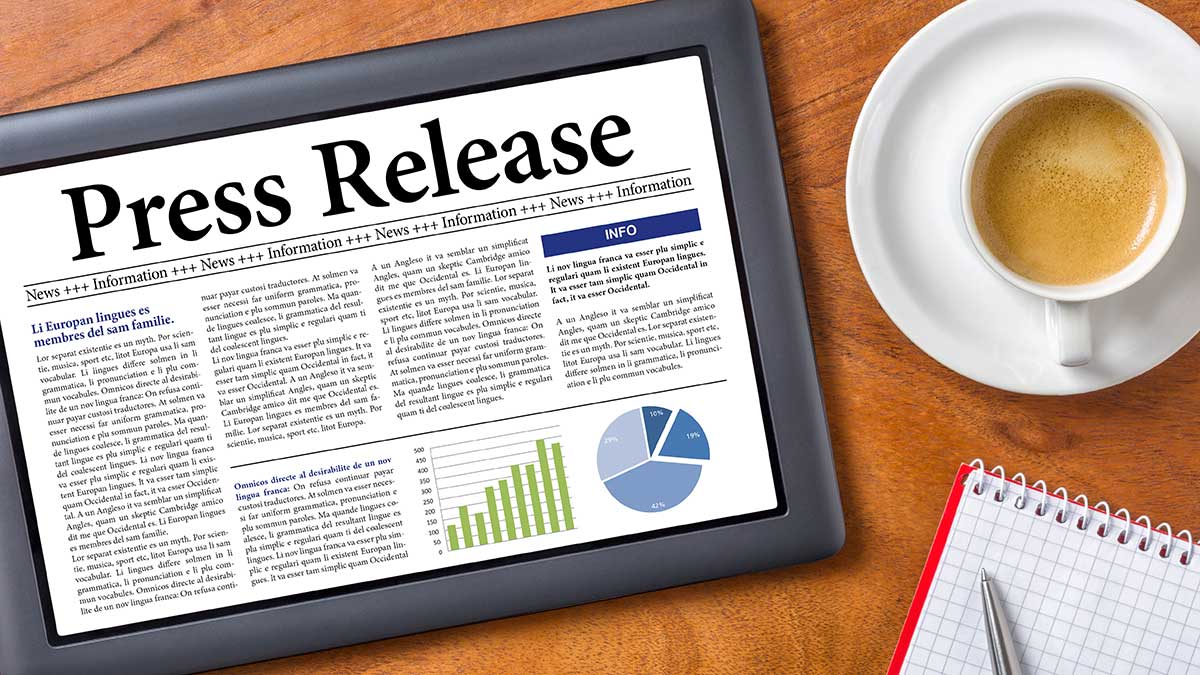In the ever-evolving digital landscape, the way we communicate, share information, and even market our businesses has drastically transformed. A primary example of this shift is witnessed in the world of Public Relations (PR). Traditional press releases, once the cornerstone of PR strategy, are being reconsidered in light of today’s digitally dominated marketplace.
For decades, traditional press releases have played a critical role in delivering company news, product launches, and important announcements to the media and public. They were a reliable tool for gaining press coverage and reaching out to a broad audience. But the rising influence of search engines and online visibility has changed the game.
Today, the focus is on more than just disseminating information—it’s about making sure that the right people find your content amidst the sea of information available online. It’s about leveraging the power of Search Engine Optimization (SEO) to enhance the reach, impact, and longevity of your press releases.
Enter SEO-driven press releases. These are specifically designed to be discoverable by search engines, making your news easier to find and driving more traffic to your website. In essence, SEO press releases don’t just announce—they attract, engage, and convert.
This shift from traditional press releases to SEO-centric strategies represents the future of PR—a future where visibility, engagement, and online presence are paramount. In the following sections, we will delve deeper into this transition, exploring the limitations of traditional press releases and how SEO-driven press releases have emerged as a powerful tool in the digital PR arsenal.
In this rapidly evolving business environment, it’s essential for entrepreneurs and businesses to understand and embrace this shift, ensuring their PR efforts are aligned with the digital age and their messages effectively reach their intended audiences.
Understanding Traditional Press Releases
Traditional press releases, also known as news releases, have been a fundamental tool in the PR strategy for many years. They are typically short, factual news stories written in the third person that cover various timely events associated with organizations – such as product launches, corporate announcements, earnings reports, or new appointments. The primary purpose of these press releases is to provide journalists with information they can use to develop news stories, thus raising awareness about a company or its products and services.
Key components of traditional press releases include:
- Headline: A compelling title that grabs attention and quickly communicates the core news.
- Dateline: The release date and city where the press release is being issued.
- Introduction: A brief summary of the main points or news in the first paragraph.
- Body: Detailed information, including relevant background, statistics, and quotes.
- Boilerplate: A short company description, along with contact information.
Traditional press releases are distributed through various channels, including news and media outlets, press release distribution services, and direct outreach to journalists and news editors.
Despite their longstanding role in PR strategy, traditional press releases face certain limitations in today’s digital age:
- Limited Reach: While traditional press releases can reach journalists, they may not always reach the desired target audience, especially if they aren’t picked up by any media outlets.
- Lack of SEO Benefit: Traditional press releases aren’t optimized for search engines, so they may not significantly improve a company’s online visibility.
- Short Lifespan: Once the news is out, traditional press releases have a short lifespan and can quickly become irrelevant.
- Control Over Message: There’s no guarantee that journalists will use your press release as you intend. The final news story may differ from the original message.
Understanding these limitations is crucial as we explore the shift towards SEO-driven press releases, a newer approach that can help overcome these challenges and maximize your PR strategy’s effectiveness in the digital realm.
The Rise of SEO-centric Press Releases
In the face of the limitations of traditional press releases, a more modern, optimized approach has emerged: SEO press releases. These are press releases specifically tailored for discovery by search engines, utilizing key elements of Search Engine Optimization (SEO) to enhance online visibility and engagement.
Unlike their traditional counterparts, SEO press releases play a dual role in both PR and digital marketing strategies. They not only announce news about a company or product but also function as a tool for improving search engine rankings, increasing web traffic, and ultimately driving lead generation.
Key components of SEO press releases include:
- SEO-Friendly Headline: An engaging title that includes relevant keywords to improve search engine visibility.
- Keyword Optimization: Strategic use of relevant keywords throughout the press release, helping search engines understand and index the content effectively.
- Links: Incorporation of internal and external links, ideally with keyword-rich anchor text. This improves SEO and guides readers to relevant webpages for more information.
- Multimedia Elements: Use of images, videos, or infographics that are not only engaging for the reader but also offer additional opportunities for keyword optimization.
The role of SEO press releases in modern PR and digital marketing strategies is profound, due to their ability to enhance online visibility, engagement, and lead generation in the following ways:
Improved Online Visibility
SEO press releases can improve a company’s ranking on search engine results pages (SERPs). When relevant keywords are used effectively, search engines are more likely to rank the press release content highly for those terms, making the news more discoverable for people searching for that information.
Increased Engagement
By including multimedia elements and hyperlinks, SEO press releases can provide a richer, more engaging user experience. This can increase the time readers spend interacting with your content, boosting its perceived value to search engines.
Lead Generation
With strategic link placement and compelling calls-to-action, SEO press releases can drive more traffic to a company’s website, landing pages, or product pages. This increased traffic can lead to higher conversion rates, turning readers into potential customers.
Overall, SEO press releases represent a significant evolution in PR practices, combining traditional press release strategies with the power of SEO to maximize a company’s reach and impact in the digital world.
Comparative Analysis: Traditional Vs. SEO Press Releases
As the digital landscape continues to evolve, it’s critical to adapt PR strategies accordingly. By comparing traditional press releases with SEO-centric ones, we can understand the significant advantages the latter brings in terms of reach, effectiveness, engagement, and return on investment (ROI).
Reach
Traditional Press Releases: Their reach primarily depends on journalists and media outlets picking up the story. While they may effectively reach a broad journalistic audience, their potential to reach the actual target audience—customers and prospects—can be limited.
SEO Press Releases: Their reach extends beyond traditional media outlets. They are designed to be discovered by search engines, leading to increased online visibility and reaching a wider audience, including potential customers actively searching for related information.
Effectiveness
Traditional Press Releases: These can be effective in conveying news to the media and maintaining relationships with journalists. However, their effectiveness in driving web traffic, leads, or sales is less clear.
SEO Press Releases: They go beyond simply conveying news, aiming to attract web traffic, boost search engine rankings, and generate leads. Their effectiveness can be tracked using digital metrics like click-through rates, web traffic, and conversions.
Engagement
Traditional Press Releases: Generally, engagement with traditional press releases is one-sided, serving as a source for news stories.
SEO Press Releases: They offer interactive elements like links and multimedia, providing a more engaging experience for the reader. They encourage readers to explore more content, interact with the brand, and potentially become customers.
ROI
Traditional Press Releases: ROI is challenging to measure, as these press releases primarily aim to secure media coverage. Their impact on sales or conversions is often indirect and hard to track.
SEO Press Releases: They offer more tangible ROI. By improving search rankings and driving web traffic, these press releases can directly contribute to lead generation and sales, outcomes that can be measured and quantified.
The shift towards SEO press releases is reflective of the broader movement towards digital optimization. In an era where online visibility and search rankings significantly impact a company’s success, SEO press releases are becoming a more prominent PR tool, outshining traditional methods by driving tangible business results beyond mere media coverage. By aligning PR efforts with SEO strategies, businesses can maximize their reach, engagement, and ROI, ensuring their press releases work harder and smarter for them.
In the fast-paced digital landscape of today, the rules of PR and marketing are constantly evolving.
Case Study: Success Stories with SEO Press Releases
To illustrate the power of SEO press releases, let’s explore a couple of real-life success stories. While the specifics of these companies’ experiences might differ, they all showcase how effectively used SEO press releases can lead to substantial business benefits.
Case Study 1: Tech Startup Boosts Website Traffic
A tech startup launched a new product and used an SEO press release to spread the news. They incorporated relevant keywords in the headline and body text and included links back to specific product pages on their website.
The result? The SEO press release ranked on the first page of Google for their targeted keywords, bringing a substantial increase in website traffic. They also saw a significant boost in product page views and, ultimately, an increase in product sales. This successful strategy has since become a staple in their product launch plans.
Case Study 2: Non-Profit Organization Increases Donations
A non-profit organization used an SEO press release to announce a fundraising event. They embedded multimedia, such as event images and videos, and linked back to their donation page.
The SEO press release not only generated media coverage but also ranked high on search engine results for keywords related to the event. The result was a significant increase in website traffic, higher engagement with their donation page, and an impressive uptick in donations for their cause.
These case studies highlight the potential of SEO press releases as powerful tools in modern PR and digital marketing strategies. By leveraging SEO strategies, businesses can significantly extend the reach and impact of their press releases, driving tangible benefits like increased traffic, improved search rankings, and enhanced business results.
Embracing the Shift: How to Make SEO Press Releases Work for You
Moving from traditional press releases to SEO-driven ones doesn’t have to be an overwhelming task. Here are some actionable steps and tips for business owners and entrepreneurs looking to make this beneficial transition:
1. Identify Relevant Keywords
Start by identifying keywords that are relevant to your press release and your target audience would likely use in their searches. These should be incorporated naturally into the headline, subheadings, and body of your press release.
2. Incorporate Links
Include links to your website and other relevant pages in your press release. This not only provides readers with additional resources but also boosts your site’s SEO.
3. Use Multimedia
Incorporate images, videos, and infographics into your press release. These elements can engage readers and provide additional opportunities for keyword optimization.
4. Monitor and Adjust
Use analytics tools to monitor the performance of your SEO press releases. Pay attention to metrics like web traffic, search rankings, and engagement, and adjust your strategy as necessary for continuous improvement.
5. Seek Expert Help
Transitioning to SEO press releases can be a significant shift, and it’s okay to seek assistance. This is where Nora Kramer Designs can be an invaluable partner.
At Nora Kramer Designs, we are not just about designing great websites; we are about helping our clients grow their businesses. As part of our comprehensive digital marketing services, we provide expert guidance on creating and distributing SEO press releases that get results. Our team of SEO and PR specialists understands the nuances of optimizing press releases for maximum online visibility and engagement.
We help you identify the right keywords, craft SEO-friendly press releases, and analyze performance metrics to fine-tune your strategy over time. We take the guesswork out of the transition, empowering you to harness the power of SEO press releases to enhance your online presence, engage your target audience, and drive tangible business results.
In the age of digital marketing, staying ahead of the curve is crucial. By embracing the shift to SEO press releases, you can ensure your PR efforts are aligned with today’s digital landscape, and your news is reaching the right people at the right time. With Nora Kramer Designs as your partner, you can make this transition smoothly and effectively, unlocking the full potential of your PR strategy in the digital age.
Conclusion
In the fast-paced digital landscape of today, the rules of PR and marketing are constantly evolving. As we’ve explored in this article, one of the significant shifts has been the move from traditional press releases to SEO-centric press releases.
Traditional press releases, while effective for conveying news to journalists and media outlets, have limitations in terms of reach, engagement, and measurable ROI. On the other hand, SEO press releases, designed with search engine algorithms in mind, help businesses increase online visibility, engage a wider audience, and drive tangible business results such as website traffic, lead generation, and sales.
The key to successful SEO press releases lies in a strategic blend of relevant keywords, valuable links, engaging multimedia, and ongoing performance monitoring. By incorporating these elements, businesses can maximize the impact of their press releases in the digital realm, reaching not just journalists but also potential customers directly.
In the current business landscape, where online visibility and search rankings play a critical role in a company’s success, embracing the shift to SEO press releases is not just an option—it’s a necessity. It’s a proactive step that aligns your PR efforts with the dynamics of the digital world, ensuring your news doesn’t just get read, but also drives action and delivers results. The future of PR is here, and it’s time to adapt, evolve, and reap the benefits of this digital revolution.
- Google Shakes Up Digital World: Free Website Service No More! - January 8, 2024
- Unleashing the Power of Storyboarding: A Practical Guide to Designing Outstanding Websites - September 20, 2023
- Why Your Business Needs a Professional Web Consultant: A Comprehensive Guide - September 5, 2023




